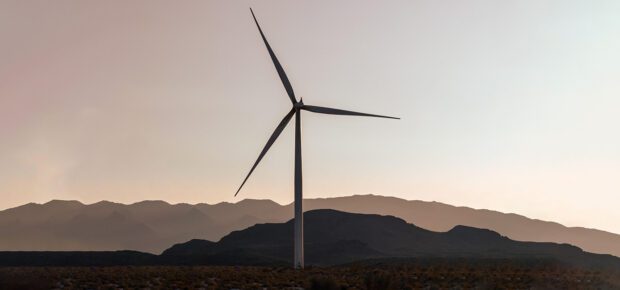January 25, 2022
In recent years, there has been a lot of discussion about sustainable energy becoming mainstream. But it hasn’t, yet, fully shed its “alternative” label.
To get there, intermittent sources of power like wind and solar need better integration into electricity grids to solve a difficult problem: Power grid operators and utilities need to balance supply and demand in real-time. Too much or too little electricity can result in unforeseen voltage fluctuations and service disruptions. On the other hand, renewable sources may also be underutilized. For example, it may be windier at night, when demand is lowest.
To address these issues, operators, utilities and entrepreneurs are investing in a range of new initiatives to integrate renewable sources into the grid. That’s what’s next in energy sustainability — a massive push and new innovations to allow utilities and grid operators to accept higher levels of renewable energy generation.
Policy and regulatory shifts
Distributed electricity generation, which features smaller, more localized power providers, contributes a range of benefits: a more flexible system, a decrease in investments in transmission infrastructure, reduced energy losses and reduced need to build high-cost power plants. It is critical for the efficient operation of the system that all electricity generation sources, including distributed generation, earn income in proportion to the benefits they provide. Regulators should ensure that behind-the-meter applications (i.e. residential solar panels), act according to network and market conditions and that traceability and controllability conditions are met.
Storage to benefit the environment
While the contribution of large-scale storage technologies to general electricity use is very important, technologies that provide storage on a micro-scale have special importance. Small-scale, behind-the-meter batteries can also reduce the use of energy produced and stored from large renewable energy sources and non-renewable fuel reserves such as natural gas and coal. For large and small-scale storage, pay attention to the full gamut of possibilities, including electrical energy storage, mechanical energy storage, chemical energy storage and thermal energy storage.
Renewables on the water
Floating installations will continue their acceleration path for both off-shore wind and solar photovoltaic technologies. Floating solar panels produce more electricity while also shading the water to reduce evaporation losses. This is the reason for the growing interest in installing floating solar panels in water-filled reservoirs, tidal flats and old opencast mines. They also generally have higher energy efficiency, as water is colder than land. When wind farms are located in the open sea, much larger areas can be used because the visual and acoustic effect is very small. Thus, offshore wind farms typically have an installed capacity of several hundred megawatts.
Food and solar farms
Another efficient and future trend is agrivoltaics applications where land is used simultaneously for agri-food production and PV electricity generation. Agri-PV increases land productivity and enables PV to expand while conserving arable land for agriculture.
Green hydrogen
Hydrogen fuel cells can store a tremendous amount of energy with a very low climate and environmental impact, making them ideal for transport and other high power applications. While hydrogen is one of the most abundant elements in nature, it is usually locked in with other elements like water or hydrocarbons. Unlocking hydrogen requires large amounts of energy, which often comes from fossil fuels. In order to decarbonize hydrogen, it is necessary to obtain renewable resources from the sun and wind, and to use alternatives to store the produced hydrogen.
Building on momentum
According to an analysis by Morgan Stanley, more than half of all vehicles sold in 2030 will be electric. The installed power in renewable energy in the world reached 2,970 gigawatts last year, a record increase of 280 gigawatts compared to the previous year. It is predicted that this rise in clean energy will continue in the coming years, according to the International Energy Agency.
Climate change requires decarbonization and energy transition on a global scale. This transition can create enormous opportunities, as the rapidly falling costs of renewable technologies, changes in climate and energy policy and financing, continued technological advancement, generate new, sustainable business models.
The future of energy is being written with innovation.
About the Author
IEEE Senior Member Simay Akar has worked in the solar and renewable energy sector since 2012. She has held several volunteer leadership roles at the global level, including the chair of the IEEE Power & Energy Society Young Professionals Committee, and as a member of the IEEE Power & Energy Society Women in Power Committee.






 Meaningful Momentum or Running in Place?
Meaningful Momentum or Running in Place? AI Through Our Ages
AI Through Our Ages Liquid Infrastructure: Our Planet's Most Precious Resource
Liquid Infrastructure: Our Planet's Most Precious Resource The Impact of Technology in 2025
The Impact of Technology in 2025 Quantum and AI: Safeguards or Threats to Cybersecurity?
Quantum and AI: Safeguards or Threats to Cybersecurity? Why AI Can't Live Without Us
Why AI Can't Live Without Us Bits, Bytes, Buildings and Bridges: Digital-Driven Infrastructure
Bits, Bytes, Buildings and Bridges: Digital-Driven Infrastructure Impact of Technology in 2024
Impact of Technology in 2024 Emerging AI Cybersecurity Challenges and Solutions
Emerging AI Cybersecurity Challenges and Solutions The Skies are Unlimited
The Skies are Unlimited Smart Cities 2030: How Tech is Reshaping Urbanscapes
Smart Cities 2030: How Tech is Reshaping Urbanscapes Impact of Technology 2023
Impact of Technology 2023 Cybersecurity for Life-Changing Innovations
Cybersecurity for Life-Changing Innovations Smarter Wearables Healthier Life
Smarter Wearables Healthier Life Infrastructure In Motion
Infrastructure In Motion The Impact of Tech in 2022 and Beyond
The Impact of Tech in 2022 and Beyond Cybersecurity, Technology and Protecting Our World
Cybersecurity, Technology and Protecting Our World How Technology Helps us Understand Our Health and Wellness
How Technology Helps us Understand Our Health and Wellness The Resilience of Humanity
The Resilience of Humanity Harnessing and Sustaining our Natural Resources
Harnessing and Sustaining our Natural Resources Creating Healthy Spaces Through Technology
Creating Healthy Spaces Through Technology Exceptional Infrastructure Challenges, Technology and Humanity
Exceptional Infrastructure Challenges, Technology and Humanity The Global Impact of IEEE's 802 Standards
The Global Impact of IEEE's 802 Standards Scenes of our Cyber Lives: The Security Threats and Technology Solutions Protecting Us
Scenes of our Cyber Lives: The Security Threats and Technology Solutions Protecting Us How Millennial Parents are Embracing Health and Wellness Technologies for Their Generation Alpha Kids
How Millennial Parents are Embracing Health and Wellness Technologies for Their Generation Alpha Kids Space Exploration, Technology and Our Lives
Space Exploration, Technology and Our Lives Global Innovation and the Environment
Global Innovation and the Environment How Technology, Privacy and Security are Changing Each Other (And Us)
How Technology, Privacy and Security are Changing Each Other (And Us) Find us in booth 31506, LVCC South Hall 3 and experience the Technology Moon Walk
Find us in booth 31506, LVCC South Hall 3 and experience the Technology Moon Walk Virtual and Mixed Reality
Virtual and Mixed Reality How Robots are Improving our Health
How Robots are Improving our Health IEEE Experts and the Robots They are Teaching
IEEE Experts and the Robots They are Teaching See how millennial parents around the world see AI impacting the lives of their tech-infused offspring
See how millennial parents around the world see AI impacting the lives of their tech-infused offspring Take the journey from farm to table and learn how IoT will help us reach the rising demand for food production
Take the journey from farm to table and learn how IoT will help us reach the rising demand for food production Watch technical experts discuss the latest cyber threats
Watch technical experts discuss the latest cyber threats Explore how researchers, teachers, explorers, healthcare and medical professionals use immersive technologies
Explore how researchers, teachers, explorers, healthcare and medical professionals use immersive technologies Follow the timeline to see how Generation AI will be impacted by technology
Follow the timeline to see how Generation AI will be impacted by technology Learn how your IoT data can be used by experiencing a day in a connected life
Learn how your IoT data can be used by experiencing a day in a connected life Listen to technical experts discuss the biggest security threats today
Listen to technical experts discuss the biggest security threats today See how tech has influenced and evolved with the Games
See how tech has influenced and evolved with the Games Enter our virtual home to explore the IoT (Internet of Things) technologies
Enter our virtual home to explore the IoT (Internet of Things) technologies Explore an interactive map showcasing exciting innovations in robotics
Explore an interactive map showcasing exciting innovations in robotics Interactively explore A.I. in recent Hollywood movies
Interactively explore A.I. in recent Hollywood movies Get immersed in technologies that will improve patients' lives
Get immersed in technologies that will improve patients' lives